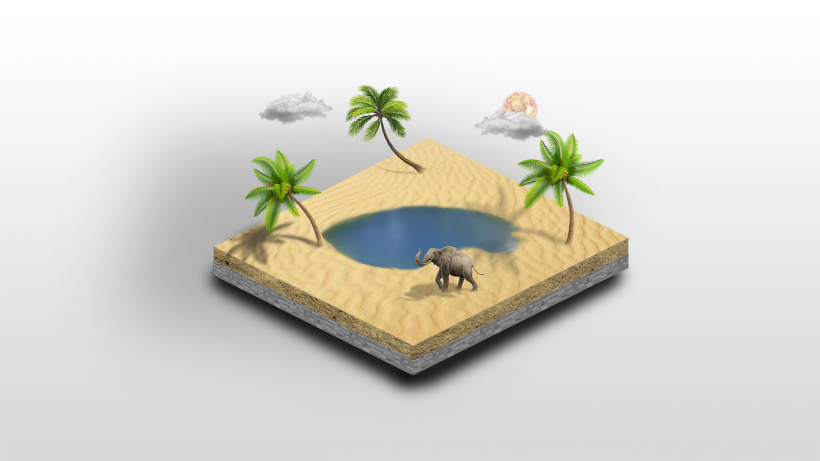Imagine an endangered ecosystem, languishing under the weight of human impact. Now, picture a technology that enables us to not only halt the damage but to restore these precious environments.
The solution lies in an unlikely place - your ordinary 3D printer. Welcome to a world where 3D-printed habitats are not only possible but are already being implemented worldwide, with remarkable results for our planet's biospheres.
How 3D Printing Habitats Saves Ecosystems
3D printing technology has made significant strides in the last decade, proving its potential in a variety of sectors - from healthcare to architecture. But it may surprise you to learn about its applications in environmental preservation.
Recent studies show that creating artificial habitats using 3D printers and technology in general can help us in the restoration of the earth in unprecedented ways. The flexibility, precision, and efficiency offered by this technology allow us to create structures tailored precisely for specific animals and plants!
The ease of replicating intricate detail results in familiar spaces for displaced species, thus aiding remarkably in their survival and propagation.
3D Printed Habitats Restore Biodiversity
Just as a well-cooked meal requires the perfect balance of ingredients, a thriving ecosystem needs diversity. Here are some ways through which artificial habitats restore biodiversity:
-
Replicating Environments: 3D printing allows us to mimic an animal's natural habitat with great accuracy. This makes it easier for animals to adapt and thrive.
-
Quick Solutions: The speed at which these habitats can be created means rapid responses to environmental crises, minimizing the loss of species.
-
Customization: Each 3D-printed habitat can be customized based on the unique needs of the species being targeted, thus diversifying their chances of survival.
These possibilities make them a potent tool in preventing species extinction.
Designing Your Own Eco-friendly 3D Printed Habitat
The process of designing a 3D-printed habitat is intricate as it necessitates close emulation of natural environments, along with addressing distinct species-specific necessities. Let's delve into a rudimentary step-by-step guide to assist you on this journey:
-
Research on the Specific Ecosystem: Understand the ecosystem you are trying to mimic - study its inhabitant species, climate, food chain, and survival challenges.
-
Use Advanced Design Software: Utilize software such as Creo or SOLIDWORKS for detailed design work. Both have their strengths, with Creo often found more flexible in parametric modeling while SOLIDWORKS excels in simpler and speedier geometric designs. This Creo and SOLIDWORKS compared overview provides deeper insight if you're exploring your options.
-
Consult Experts: Collaborate with ecologists or botanists, who can provide unique insight into what specific features will best serve the intended species.
Remember - this is about restoring balance! Your creations should aim not only at immediate restoration but also at long-term sustainability.
Implementing 3D Printed Habitats into an Ecosystem
Building a habitat is just the beginning. To maximize the positive impact of these structures, they must be strategically integrated within existing ecosystems. Location and timing, for instance, are key factors.
An artificial reef must be placed where currents will lead fish back to it naturally. If we're releasing nesting boxes for birds into a forest, then the breeding season of that species would be the best time.
A gradual introduction of these habitats also helps integrate them into an ecosystem as it provides time for flora and fauna to adjust to their new neighbors at their own pace. Making 3D habitats blend seamlessly with nature not only ensures survival but also boosts animal communities' long-term prosperity.
3D Printed Habitats Could be The Future of Conservation
Looking beyond the immediacy of aiding endangered species, 3D-printed habitats also present long-term sustainability benefits:
-
Materials: 3D printing can utilize repurposed or recycled materials, reducing waste and promoting a circular economy.
-
Efficiency: By eliminating excess and unused materials traditionally associated with construction, 3D printing offers a more efficient approach to building habitats.
-
Flexibility: With the ability to customize designs for each unique ecosystem, we can target conservation efforts more precisely than ever before.
Embracing this innovative technology in preservation strategies holds immense prospects in saving our earth and shaping its sustainable future.
Creating a Ripple Effect on the Ecosystem with 3D-Printed Habitats
The effects and potential of 3D-printed habitats ripple afar into the broader ecosystem. Aside from restoring habitats and aiding species recovery, they also contribute to global climate regulation by promoting the growth of biodiversity hotspots.
More diverse ecosystems store higher amounts of carbon dioxide, thus moderating global warming in a significant way. Strengthening inter-species relationships and enhancing natural resilience are other uncapped treasures that these artificial shelters hold for us.
Therefore, including them in our arsenal to preserve the environment can redefine how we combat ecological degradation and preserve biodiversity.
Printing a Greener Future: Final Words
Our future is inevitably intertwined with the fate of our ecosystems. As we grapple with daunting ecological challenges, it's heartening to see human ingenuity rising to the occasion.
Through 3D-printed habitats, we can foster biodiversity, protect threatened species, and trigger a ripple effect of sustainable benefits on our planet. The responsibility is ours as much as the technology is - to harness it wisely for a thriving earth.
© 2024 NatureWorldNews.com All rights reserved. Do not reproduce without permission.
* This is a contributed article and this content does not necessarily represent the views of natureworldnews.com



![Climate Change is Reducing Dust Levels Worldwide as Arctic Temperature Warms [Study]](https://1471793142.rsc.cdn77.org/data/thumbs/full/70320/280/157/50/40/climate-change-is-reducing-dust-levels-worldwide-as-arctic-temperature-warms-study.jpg)

![Tsunami Hazard Zones: New US Map Shows Places at Risk of Flooding and Tsunamis Amid Rising Sea Levels [NOAA]](https://1471793142.rsc.cdn77.org/data/thumbs/full/70325/280/157/50/40/tsunami-hazard-zones-new-us-map-shows-places-at-risk-of-flooding-and-tsunamis-amid-rising-sea-levels-noaa.jpg)
